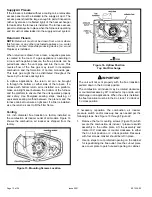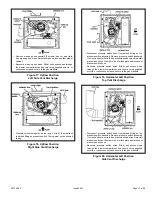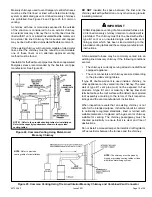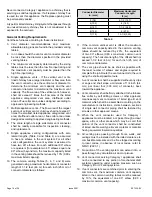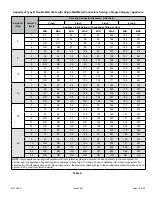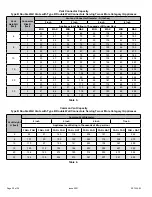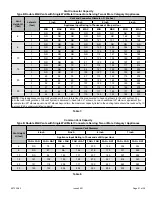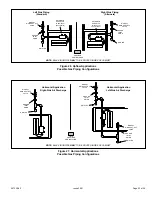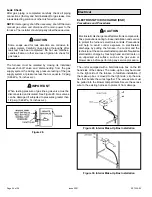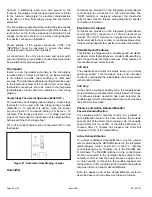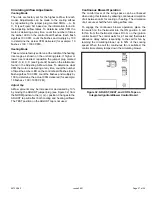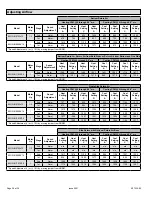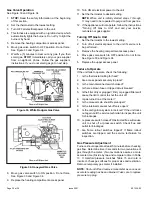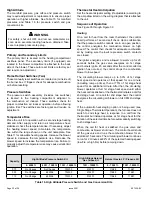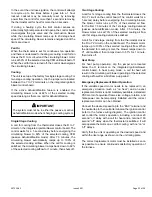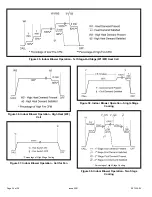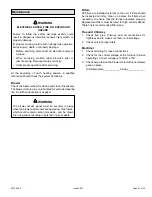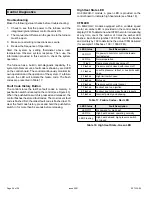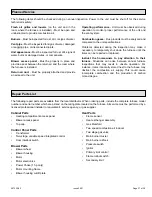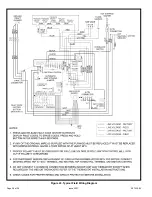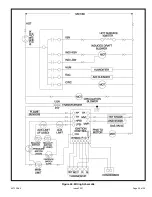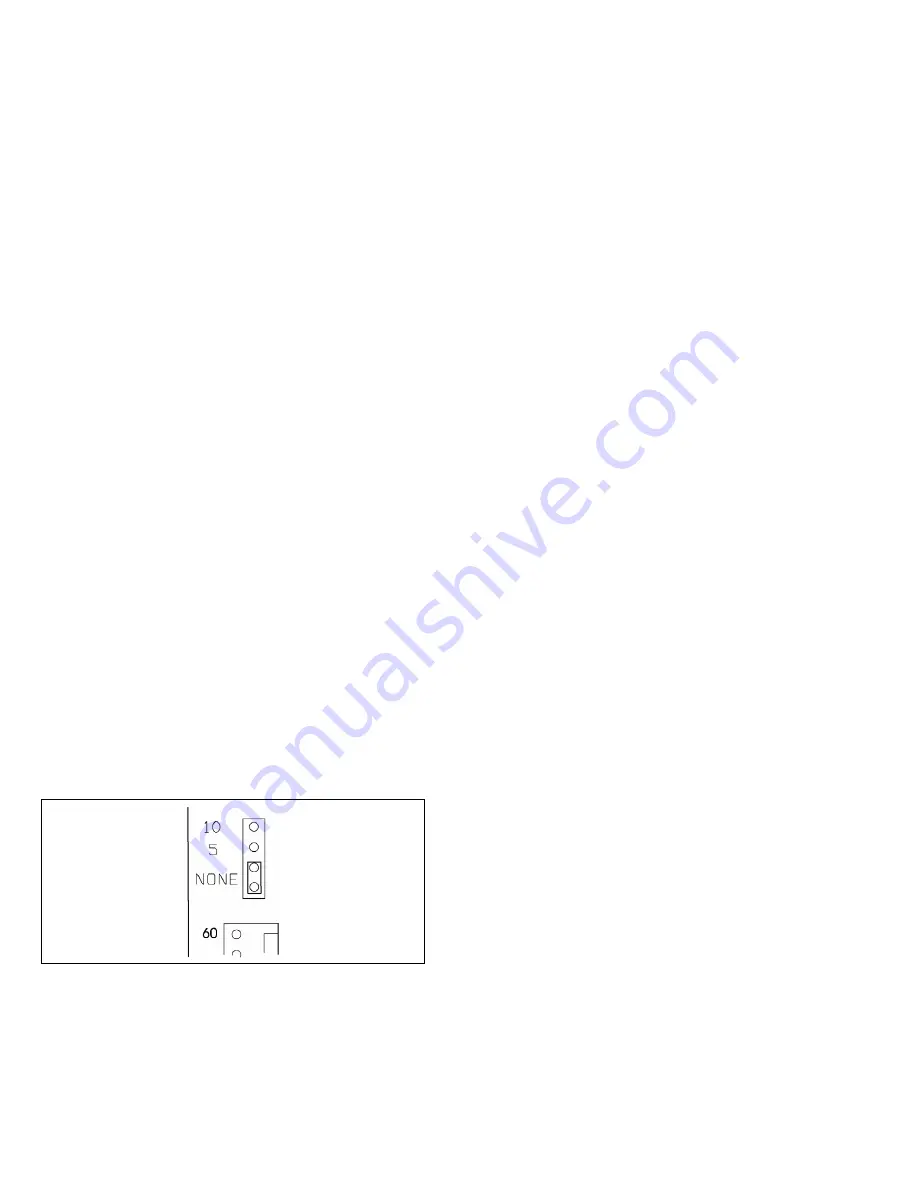
507335-02
Page 26 of 39
Issue 2001
Connect a sufficiently sized wire with ground to the
furnace’s line voltage connections and ground wire. Refer
to the furnace rating plate for electrical characteristics
to be used in sizing field supply wiring and overcurrent
protection.
The line voltage supply should be routed through a readily
accessible disconnect located within sight of the furnace. A
junction box on the furnace side panel is provided for line
voltage connections. Refer to the furnace wiring diagram
for specific connection information.
Proper polarity of the supply connections (“HOT” and
“NEUTRAL”) must be observed to ensure that safety
controls provide the protection intended.
A connection to the unit’s ground wire and actual earth
ground (typically a ground stake or buried steel pipe) must
be maintained for proper operation.
Thermostat
Install a room thermostat according to the instructions
furnished with it. Select a location on an inside wall that
is not subject to drafts, direct sunshine, or other heat
sources. The initial heat anticipator setting should be equal
to the total current draw of the control circuit. Low voltage
thermostat connections are to be made to the integrated
ignition/blower control board as indicated on the wiring
diagram.
Single Stage Thermostat Operation (80G2UH-V )
The automatic heat staging option allows a single stage
thermostat to be used with two stage furnace models
(
80G2UH-V). To activate this option, move the jumper
pin (see Figure 31) to desired setting (5 minutes or 10
minutes). The furnace will start on 1st stage heat and
stay at 1st stage heat for the duration of the selected time
before switching to 2nd stage heat.
W1 on the control board must be connected to W1 on the
thermostat.
Figure 31. Automatic Heat Staging Jumper
Humidifier
Terminals are provided on the integrated ignition/blower
control board for connection to a 120-volt humidifier. The
“HUM” terminal is energized whenever the thermostat
calls for heat. See the furnace wiring diagram for specific
connection information.
Electronic Air Cleaner
Terminals are provided on the integrated ignition/blower
control board for connection of a 120-volt electronic air
cleaner. The “EAC” terminal is energized whenever the
thermostat calls for heat, cooling, or continuous blower. See
furnace wiring diagram for specific connection information.
Variable Speed Features
This furnace is equipped with a variable speed circulation
air blower motor that will deliver a constant airflow within a
wide range of external static pressures. Other features of
this variable speed motor include:
Soft Start
The variable speed motor will slowly ramp up to normal
operating speed. This minimizes noise and increases
comfort by eliminating the initial blasts of air encountered
with standard motors.
Soft Stop
At the end of a cooling or heating cycle, the variable speed
motor will slowly ramp down after a short blower “off” delay.
If continuous blower operation has been selected, the
variable speed motor will slowly ramp down until it reaches
the airflow for that mode.
Passive and Active Dehumidification
Passive Dehumidification
For situations where humidity control is a problem, a
dehumidification feature has been built into the variable
speed motor. At the start of each cooling cycle, the variable
speed motor will run at 82% of the rated airflow for 7.5
minutes. After 7.5 minutes has elapsed, the motor will
increase to 100% of the rated airflow.
Active Dehumidification
To achieve additional dehumidification, clip the jumper
wire located below the DEHUM terminal on the integrated
ignition/blower control board and connect a humidity
control that opens on humidity rise to the DEHUM and
R terminals. The DEHUM terminal on the control board
must be connected to the normally closed contact of the
humidity control so that the board senses an open circuit
on high humidity. In this setup, the variable speed motor
will operate at a 18% reduction in the normal cooling airflow
rate when there is a call for dehumidification.
Both the passive and active dehumidification methods
described above can be utilized on the same furnace.

